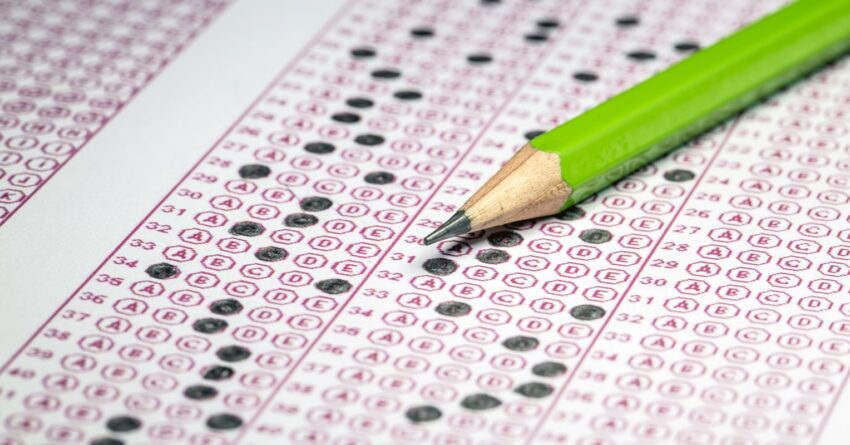
Tests don’t have to be so stressful
Source: ake1150sb/Depositphotos
It’s May. Hang around any high school—especially the junior class of any high school—and you will feel the torrent of teenage adrenaline and the nerves pulsing with test anxiety. SAT, ACT, AP exams, finals, and, looming in the near distance, college applications.
Some students are exhilarated: I’m about to take wing and fly the coop! But to many others, it’s a moment for tension and dread: Oh no, I’m not ready for this! You can’t go backwards, only forwards.
As an old Eagle Scout, I have come to understand, over many years, the wisdom in the Boy Scout motto “Be Prepared.” As a psychologist who, for the last 40 years, has focused on how stress affects human performance, I’d like to offer some suggestions on how to best prepare for what’s coming.
The four essentials for successful test performance
- Know the test. Any test you’re about to take has been around for awhile. Get to know how the test is constructed (How many sections are there? How many questions are there? Are they multiple choice or short-form answers? How much time will you have? Are there any breaks?) Just like a cross-country runner, familiarize yourself with the course before the race begins. Make sure you know the test “terrain” thoroughly.
- Learn the content. Every test covers a certain domain of material. The more familiar with what the test covers, the better chance you’ll have of scoring well. This is where some students “skimp”—they learn “just enough,” thinking they will be able to wing it at test time. Not a good plan.
- Practice. Seek out old exams. Practice will help you organize your thoughts and show you where there are gaps in your knowledge. Taking practice tests can be helpful if you analyze your answers—the wrong ones, and, surprisingly, your right answers as well (I’ll have more to say about this below).
- Learn and practice with performance tools. When you cross over the threshold into the exam room, a whole bunch of things happen: your heart starts beating rapidly, you get worried, you can’t remember stuff you know you studied, you get distracted by other students or the noises outside the building. You need what I call “performance tools.” (More below).
The pitfalls of improper practice and not using performance tools
I have seen countless students take practice tests and score well on them, but then, when they take the actual test, their performance dips significantly. Almost always it’s because they didn’t practice properly and they did not have or use performance tools.
Proper practice means carefully analyzing your answers. Too often, after taking a practice test, students look at the score they received as a predictor of the score they’ll achieve on the actual test. If the practice score is at or close to what they’d hope for, they’re happy and think, “I’m ready!” If it’s lower than expected, they review their wrong answers. Both approaches are insufficient: a score is a number that is affected by many factors—the breadth and depth of questions, how you were feeling when you practiced (were you nervous or calm; confident or self-doubtful; focused or distracted?).
To “crack the test code,” you need to analyze your answers—all your answers—your wrong ones and your right ones. Analyzing wrong answers will reveal the gaps in your knowledge; where you second-guessed yourself; where you were rushing or misread the question or answer choices. Analyzing your right answers will show you if you actually knew what you were doing or if you just got lucky. You need to get under the hood of your practice tests. It will show you how to best use the available time you have before test day.
When you take the actual test—in addition to all the knowledge you’ve studied and, hopefully, mastered, you need to be able to be in the right state to do your best. This means being calm (in your body), confident (in your mind), and focused (in your spirit).

This is the sturdiest platform for superior test performance
Source: Ben Bernstein
The 3-legged stool
I liken being in the right mental state to a three-legged stool: when all the legs are equally strong, it’s a very sturdy platform. If one of the legs is short or weak, the whole structure is unstable.
When you’re taking a test, your body, mind, and spirit are all involved. If you are very nervous (body), it’s going to affect your mind and spirit. If you’re doubting yourself (mind), you’ll feel anxious and find it hard to stay on track. If you’re distracted (spirit), you won’t be able to think methodically.
Learn how to calm yourself down (regular breathing is the best) when you feel anxious. If your confidence slips, practice re-connecting with your best self. Recognize when you are “losing it” so can get yourself back on track right away.
What you can do now
In subsequent posts, I’ll give you all nine performance tools that make up the 3-legged stool. Understand first that the tools will be useful to you only if you’ve thoroughly covered the first three pillars described above: once you know the test, have learned the content, and practiced wisely, then you’ll be ready to receive the nine tools, and, with them, cross the threshold into the exam room and perform at your best.
